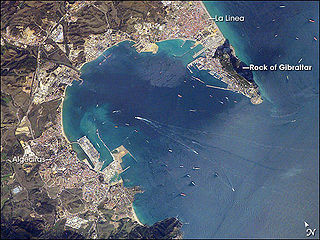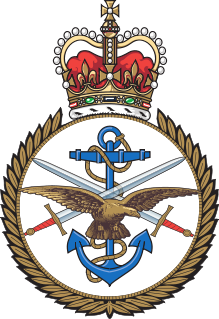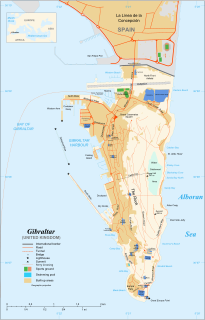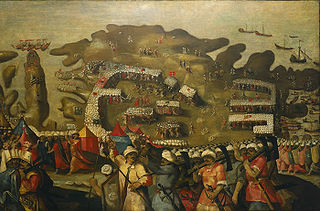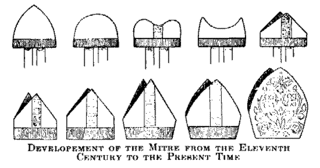The history of Gibraltar portrays how The Rock gained an importance and a reputation far exceeding its size, influencing and shaping the people who came to reside here over the centuries.

The culture of Gibraltar reflects Gibraltarians' diverse origins. While there are Spanish and British influences, a result of the territory's status as a British overseas territory and its proximity to Spain, the ethnic origins of most Gibraltarians are a mix of Andalusian Spaniards, Genoese, Maltese, Portuguese and British. The main religion is Christianity, the majority group being the Roman Catholic Church, then the Church of England. There is a long established Sephardic Jewish community, a number of Hindu Indians and a Moroccan Muslim population. Gibraltarians of Genoese origin came to The Rock in the 18th century, with the Maltese and Portuguese following in the 19th century, coming to work and trade in the British military base. Spanish Andalusian origins are the result of generations of intermarriage with inhabitants of surrounding towns.
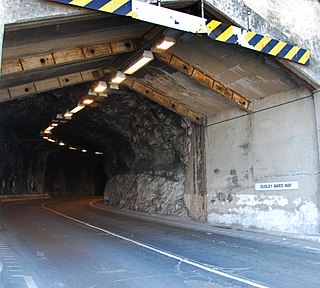
Dudley Ward Way is a road tunnel through the south-eastern part of the Rock of Gibraltar. It is named after Sir Alfred Dudley Ward, Governor of Gibraltar from 8 June 1962 to 5 August 1965. The road running through the tunnel links the eastern side of The Rock via Sir Herbert Miles Road, with Europa Point, at the southern tip of Gibraltar via Europa Advance Road.

The Cathedral of Saint Mary the Crowned is a Roman Catholic cathedral in Gibraltar. It is the primary centre of Catholic worship in the Diocese of Gibraltar.
Peter Emmanuel Amigo was a Roman Catholic bishop in the Catholic Church in England and Wales. He was the founder of The John Fisher School in 1929.

The Roman Catholic Diocese of Gibraltar is a diocese of the Latin Rite of the Roman Catholic Church in the British overseas territory of Gibraltar. The Latin name for the diocese is Dioecesis Gibraltariensis. About twenty priests and nine sisters serve in the diocese. Carmelo Zammit was installed as bishop on 24 September 2016.
Bernard Patrick Devlin, KC*HS, CMG, GMH was an Irish clergyman of the Roman Catholic Church. He served as fifth Bishop of the Roman Catholic Diocese of Gibraltar from 1985 to 1998.

Gibraltar is a juridically independent area in western Europe, and forms part of the Commonwealth of Nations as a British overseas territory.

The following outline is provided as an overview of and topical guide to Gibraltar:

The Shrine of Our Lady of Europe is a Roman Catholic parish church and national shrine of Gibraltar located at Europa Point. The church is dedicated to Our Lady of Europe, the Catholic patroness of Gibraltar.
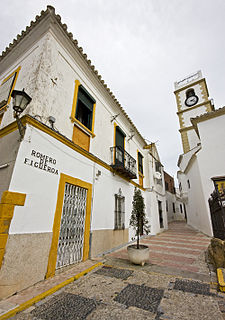
Juan Romero de Figueroa was a Spanish Roman Catholic priest, in charge of the Parish Church of St. Mary the Crowned during the last years of Gibraltar's Spanish period and first ones of the British period, until his death. He remained at his post even after the territory's capture by an Anglo-Dutch fleet in 1704 on behalf of the Archduke Charles, pretender to the Spanish throne in the War of the Spanish Succession, when most of its population abandoned Gibraltar.
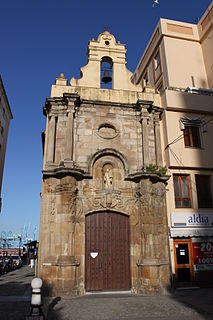
The Chapel of Our Lady of Europe is a Roman Catholic chapel located in the High Square of Algeciras (Spain). The popularly known "Capillita de Europa" is considered as the foundational element of the modern city of Algeciras. It was the host of the statue of the Virgin and the Child kept in the Shrine of Our Lady of Europe from the capture of Gibraltar by the Anglo-Dutch fleet in 1704 to 1864.

The CatholicMilitary Ordinariate of Australia, is a Latin Church suffragan military ordinariate of the Roman Catholic Church immediately subject to the Holy See. It was established in 1969 and managed for administrative purposes by the Archdiocese of Sydney.
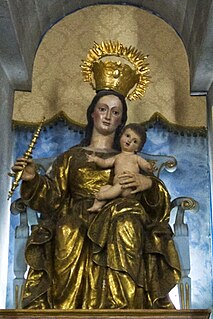
Our Lady of Europe is a title given to the Blessed Virgin Mary as patroness of Gibraltar. The entire European continent was consecrated under the protection of Our Lady of Europe in the early 14th century from the Shrine in Gibraltar where devotion still continues to this day, over 700 years on.

John Baptist Scandella STD was a Gibraltarian Roman Catholic priest of Genoese descent. He was Vicar Apostolic of the Diocese of Gibraltar between 1857 and 1880. He spoke fluent English and his native Spanish. Scandella is mainly remembered in Gibraltar for seeing the return of the statue of Our Lady of Europe to Gibraltar from Algeciras in Spain and for his efforts to improve education in the territory.

The British Government's decision to enforce a mass evacuation of the civilian population during the Second World War from the Crown colony of Gibraltar, in order to increase the strength of The Rock with more British Armed Forces personnel, meant that most Gibraltarians were forced to be away from Gibraltar and did not have a place they considered to be home. Only those civilians with essential jobs were allowed to stay. However, this event gave the entire community a heightened sense of "Britishness" by sharing in the war effort.

King's Chapel is a small chapel in the British Overseas Territory of Gibraltar. It is located at the southern end of Main Street and adjoins the Governor of Gibraltar's residence, The Convent. What nowadays is King's Chapel was the first purpose built church to be constructed in Gibraltar. Originally part of a Franciscan friary, the chapel was built in the 1530s but was given to the Church of England by the British after the capture of Gibraltar in 1704. It was badly damaged in the late 18th century during the Great Siege of Gibraltar and in the explosion of an ammunition ship in Gibraltar harbour in 1951, but was restored on both occasions. From 1844 to 1990 it served as the principal church of the British Army in Gibraltar; since then it has been used by all three services of the British Armed Forces.







